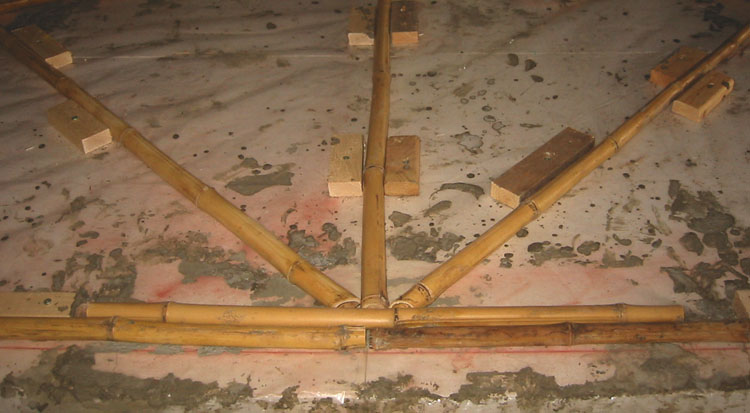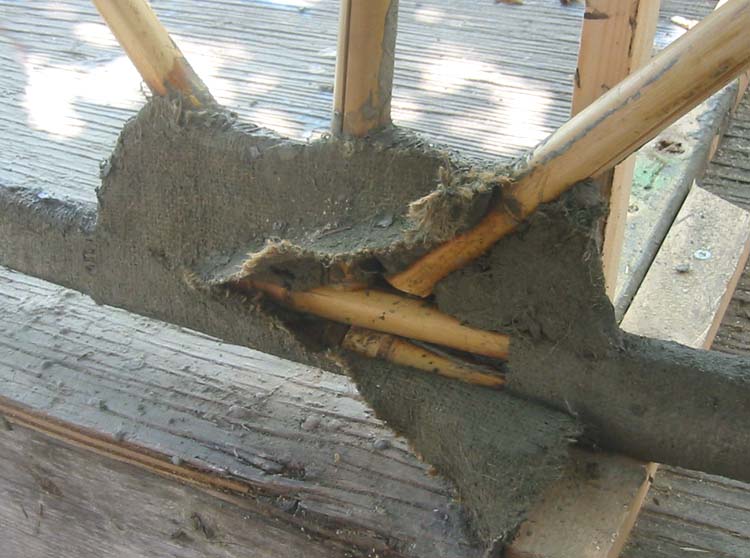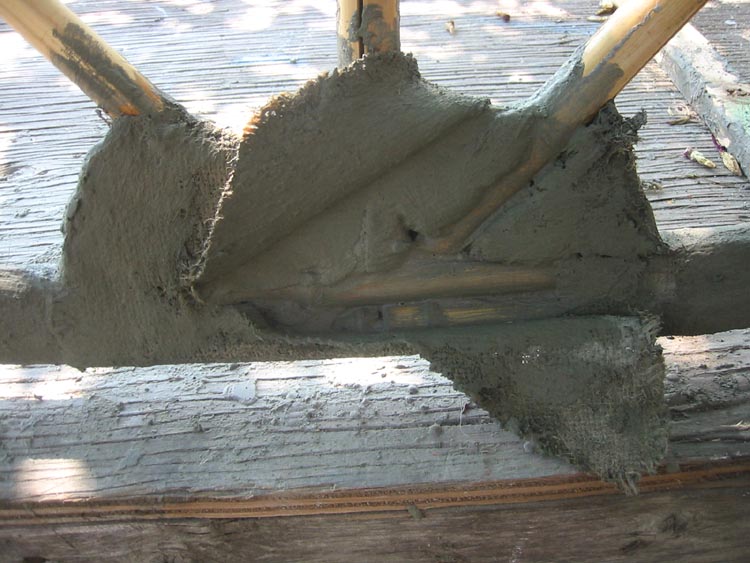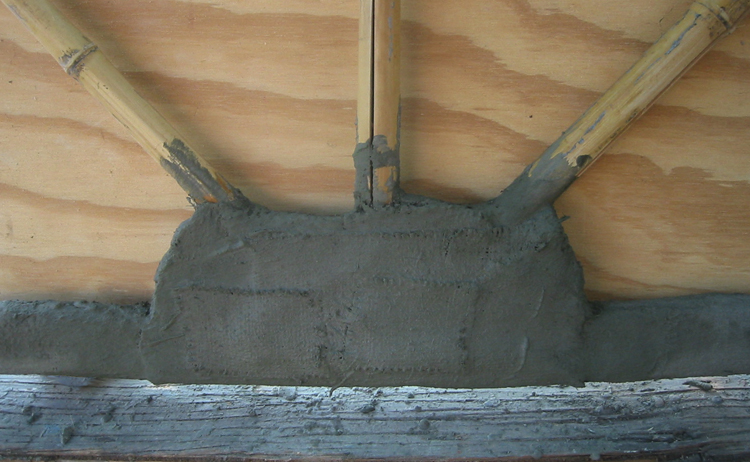
The flat table jig used here to make identical trusses would be quite different if bamboo were connected using a wrapping methog commonly seen for connection points on wicker furniture or bamboo scaffolding. This sort of connection would be better where binding materials and skills are available.
The previous smooth plane roof on the small structure used wood which was cut to 2 x 4 centimeters so it would approximate the bamboo used in the trusses. Keep in mind that the wood was covered with cement and acrylic soaked fiber, the same idea that the wood is merely a mold for the fiber carries through here with the bamboo, that is why these designs are thought of as a method for utilizing the lowest quality of bamboo.
This section is put together from photos taken of repairs made to a faulty connection. There were two reasons that the connection was faulty. First, the last truss was used as a speed test to help determine how quickly a truss can be made. Second, the last truss used all the more crooked lengths which had not been selected for the other trusses.
I let some children climb on the trusses, they were cautious yet paid no attention to the connections. The bamboo bent significantly under their weight but no connections were damaged.

Bamboo grows in almost all climate zones and is an rapidly growing commercial crop which can replace lumber and relieve stress on forests. Any straight sapling wood which can be rapidly grown to three or four meters can be used instead of bamboo.
The plywood pallet below is covered with plastic which can be cleaned. A thin, flat piece of wood is a good tool with many uses. There are three types of fiber in the picture. The longer fiber to the left is hemp. The middle, golden colored fiber is a low grade of flax, it is also the fiber soaked with cement. The cloth near the brush is burlap, made of jute.

A noticable void was cut open and exposed when the truss was moved from the flat table jig and placed upright for inspection of the underneath side.

The paint brush was used to prepare the void area so it could be filled with the soaked fiber shown on the pallet. When the void was filled with fiber the peeled back fabric and the newly add fiber were coated with additional cement acrylic liquid.

Smaller pieces of burlap were positioned over the original cuts and a final coat of cement and acrylic mixture was brushed on. This patching technique is similar to fixing a surfboard. A sculptor would wait one day then smooth with a carpenters rasp and brush on a finish coat.
